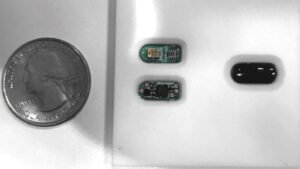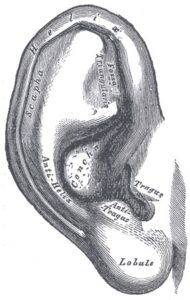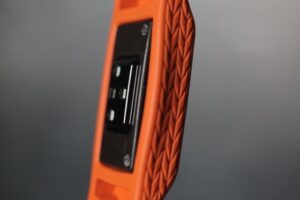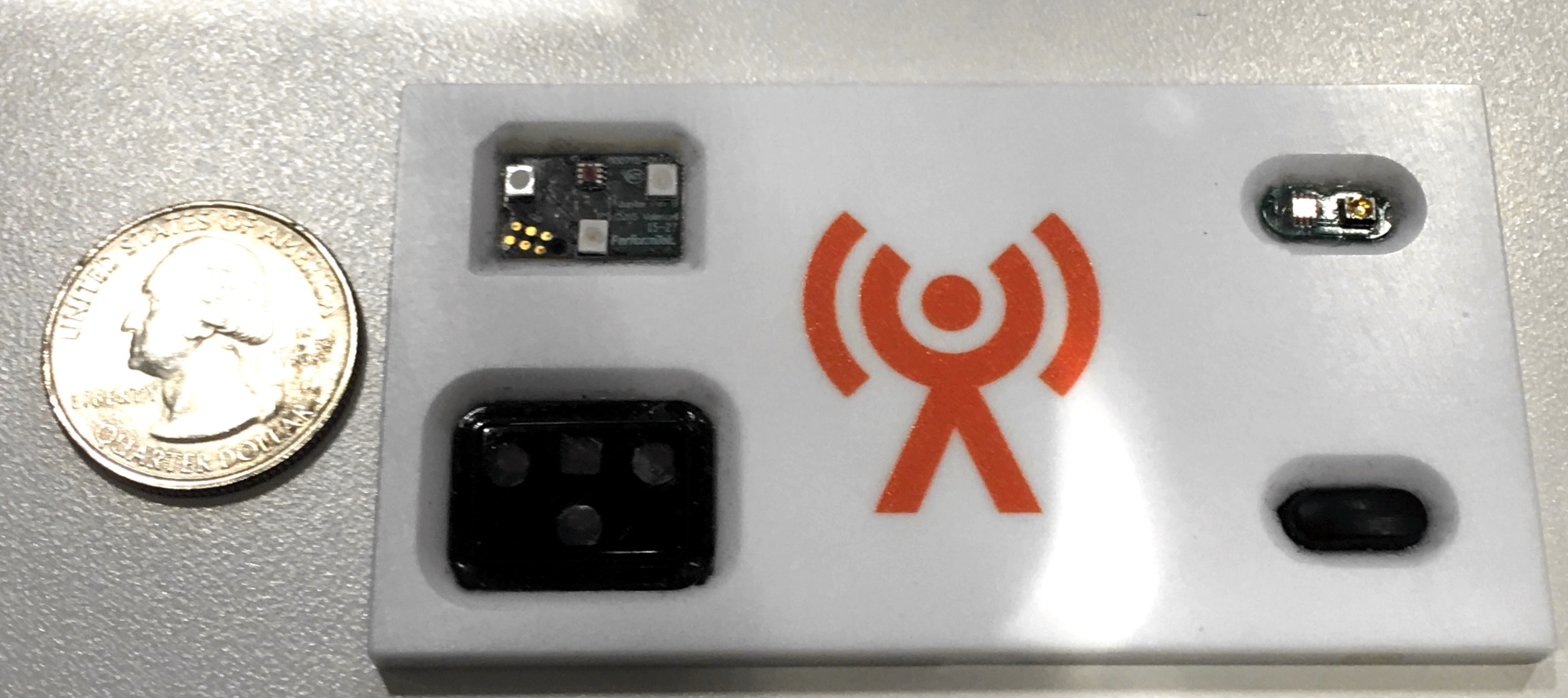Tyler Cowen, professor of Economics at George Mason University, argues we are currently experiencing a “Great Stagnation”[1], a time in world history when innovation is no longer earth shattering to the point of changing our lives and transforming our economies. By the end of this piece, you’ll understand why ST and Valencell have just proven him wrong.
Based in North Carolina, Valencell shone at the last ST Developers Conference with its wearable heart rate monitors. Its sensors are in more than 15 products by popular companies like Jabra, LG, Bose, and Scosche, among others, for one simple reason: its mastery of photoplethysmography (PPG) is second to none.
PPG: What It Is and What we Get Out of It
At its core, a plethysmograph is a measurement of volume. When used in large equipment, experts can use it to measure absolute blood volume changes to determine blood flow (F = ∆V/∆t, where F is blood flow, V is volume and t is time). However, the much smaller sensors found in medical and consumer devices focus on relative changes, specifically variations in blood volume that occur with each heartbeat, by using photoplethysmography, a technique that shines one or more lights on a specific vascular system. As the photons travel through the blood vessels and back to the sensor, some will be absorbed by the blood (the Beer-Lambert law). Computing how much light came back will indicate what the blood volume was, allowing the system to monitor the pulsatile volume variations to determine the heart beat[2].

First described in 1937[3], this technique is certainly not new but its widespread adoption by consumer wearable devices is recent because simply measuring the pulsatile volume with a wristband or earpiece is not enough to get an accurate physiological picture. A system must account for the signals caused by motion to differentiate between blood flow signals and motion noise. Furthermore, Valencell’s active signal characterization goes one step further by characterizing the noise coming from the environment in order to increase the measurements’ accuracy. As a result, its sensors have an error rate of only ± 5 beats per minute, even during extreme physical activity, which is similar to the variations one would observe among chest strap monitors.
“It Needs to Be a System”
Accuracy depends greatly on the quality of the information sent to the system. Hence, one would be vastly mistaken in thinking Valencell’s success is solely shaped by its advanced and groundbreaking algorithms. Dr. Steven LeBoeuf, President and Co-founder of the company explains that,
“The biggest misunderstanding from some of the manufacturers trying to add a heart rate sensor to their wearable device comes from thinking one can design the hardware and algorithms separately. It needs to be a system with all the parts designed to work together”

This is why Valencell has guided its partners as they integrated heart rate sensors in their products and why the company has developed optical solutions to meet its customers’ needs. Unless one uses proper hardware, no amount of algorithm will be able to provide satisfactory results. For instance, Dr. LeBoeuf’s teams added a yellow light next to the green lights typically used for PPG to maintain accuracy across a multitude of skin tones. Indeed, different skin tones absorb photons at a vastly different rate, greatly impacting signal quality. Unfortunately, some competing solutions fail to account for it, leading to widely inaccurate results. Moreover, customers are demanding more biometrics in the same wearable form-factor, requiring careful engineering to generate multiple accurate biometrics using the same sensor system.
A lot of work also goes into the placement of the light emitters and photoreceptors, as well as the light-guiding approach. It’s not enough to simply have bright LEDs. The type of lights and their position are fundamental. For instance, heart rate sensors on earbuds use an infrared light, because the sunlight renders the green LEDs highly ineffective. Furthermore, Valencell is careful to target the concha, just below and behind the anti-tragus because there’s a vast array of arterioles that offer a much cleaner signal than almost any other location in the body.
The ST Advantage
As Valencell’s solutions increased in popularity, some partners asked if they could simply get a pre-packaged module that could quickly be integrated in their products to simplify their development processes, reduce costs, and accelerate their time to market. To best answer this call, their team of experts turned to ST. As Dr. LeBoeuf explains,
“What attracted us to the STM32 microcontrollers (MCUs) was the substantial reduction in power consumption. The components offered an architecture that was compatible with what our partners were using, and they had the features as well as the computational power required to efficiently deal with the information coming from the different sensors, while reducing the system’s energy needs by about half.”

The collaboration with ST enabled Valencell to come up with two pre-packaged solutions, one for the arm and wrist and one for the ear, that manufacturers can just add to their designs. They both rely on an STM32L4 MCU and SensorTile, the small board full of MEMS that took the Developers Conference by storm.
The Dream Team
Valencell was thus able to focus on what they do best, while ST’s components took care of the rest. Dr. LeBoeuf’s teams provided its outstanding optical sensor systems and algorithms that are responsible for some of the most accurate heart rate monitoring on wearable devices in the market, while SensorTile handles all the other physical activity recognition and the Bluetooth connection to a mobile device. Furthermore, because all the sensors use either I2C or a UART communication path, engineers end up getting a simple and efficient design that gives them a quick and simpler access to the sensors’ information.
Hence, it is impossible to talk about a “Great Stagnation” when we see how Valencell’s biometric sensors are changing the wearable market today. For instance, previous sports bras relied on electrodes and were extremely uncomfortable because they required fabrics that irritated the skin. Valencell’s solution has changed that, allowing manufacturers to use better fabrics, while still offering great heart rate monitoring. By collaborating with ST, they can now offer an efficient and powerful module to more manufacturers, integrating more products, and penetrating more markets.
The Future of Internal Tracking
As Valencell continues to perfect its technology to one day track more medical conditions like blood pressure or even atrial fibrillation, one can easily foresee great applications. Patients could insert earbuds as they call doctors or medical respondents who would immediately get information that could help them reach a quicker and more pertinent diagnosis.
There are also worlds to explore and Valencell can rely on ST components to conquer them. Microphones on SensorTile open the door to auscultatory analysis, meaning listening to the sounds produced by the body to gather a treasure trove of information from respiration rate, to stress or hunger, among many other things. As we perfect beamforming, mics will pick up the appropriate sounds and block the noise. Systems will then determine when a person is hungry or has a serious medical condition. Engineers will instantly know if their new interface improved or damaged a user experience by monitoring stress levels, potentially providing a design that is not only responsive to screen sizes, but a user’s moods and feelings.
If we were in a “Great Stagnation”, Valencell and ST just shocked innovation back into a rhythm that has only just begun to transform markets and people’s lives. To know more about its technology and products, you can visit Valencell’s website. You can also learn more on STM32 MCUs and SensorTile by visiting ST.com or ST’s Blog.
- The Great Stagnation: How America Ate All The Low-Hanging Fruit of Modern History, Got Sick, and Will (Eventually) Feel Better, Tyler Cowen, Penguin, Jan 25, 2011 ↩
- For more information on PPG: Photoplethysmography and its application in clinical physiological measurement, John Allen, Physiological Measurement 28 (2007), R1–R39 ↩
- Photoelectric plethysmography of the fingers and toes in man, Alrick B. Hertzman, Experimental Biology and Medicine 37(3), pp. 529–534 (1937) ↩
